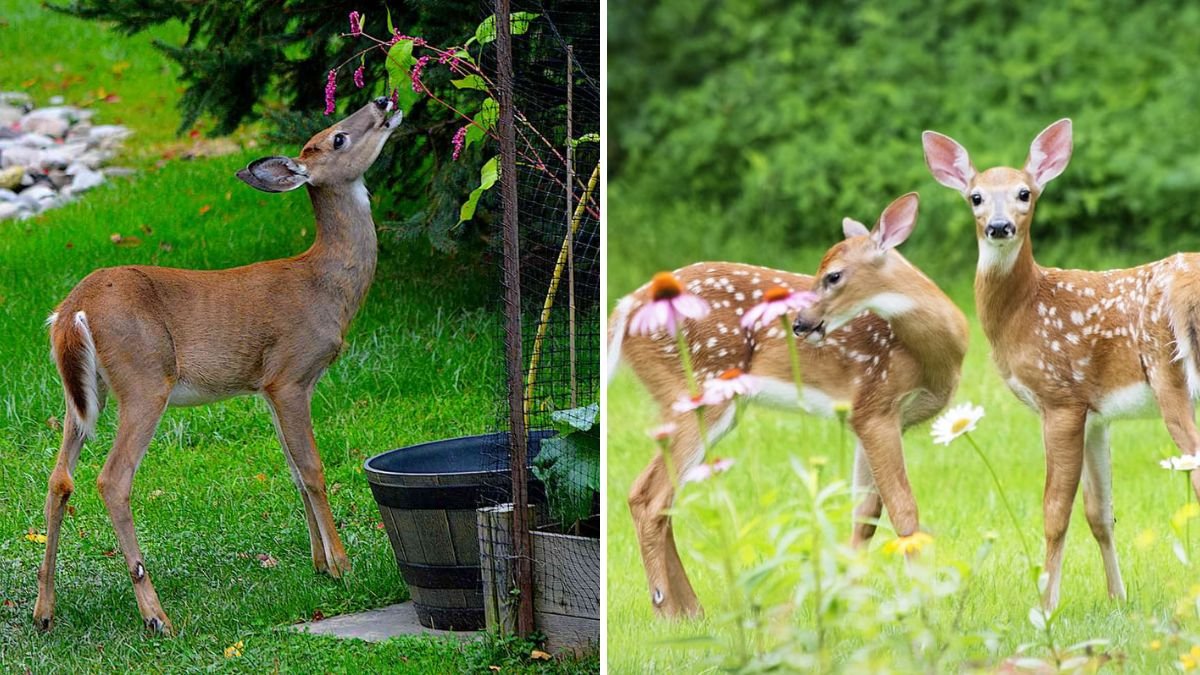Fall gardens bring vibrant colors, late-season vegetables, and ornamental displays that add life to your landscape. Unfortunately, these same gardens attract deer, which can cause significant damage by feeding on plants, buds, and fruits. Deer are particularly active in autumn, as they prepare for winter and take advantage of abundant food sources.
Keeping deer away requires a combination of prevention, deterrence, and ongoing management. This guide provides detailed strategies to protect fall gardens, ensuring that your plants thrive without becoming deer snacks.
Why Deer Target Fall Gardens
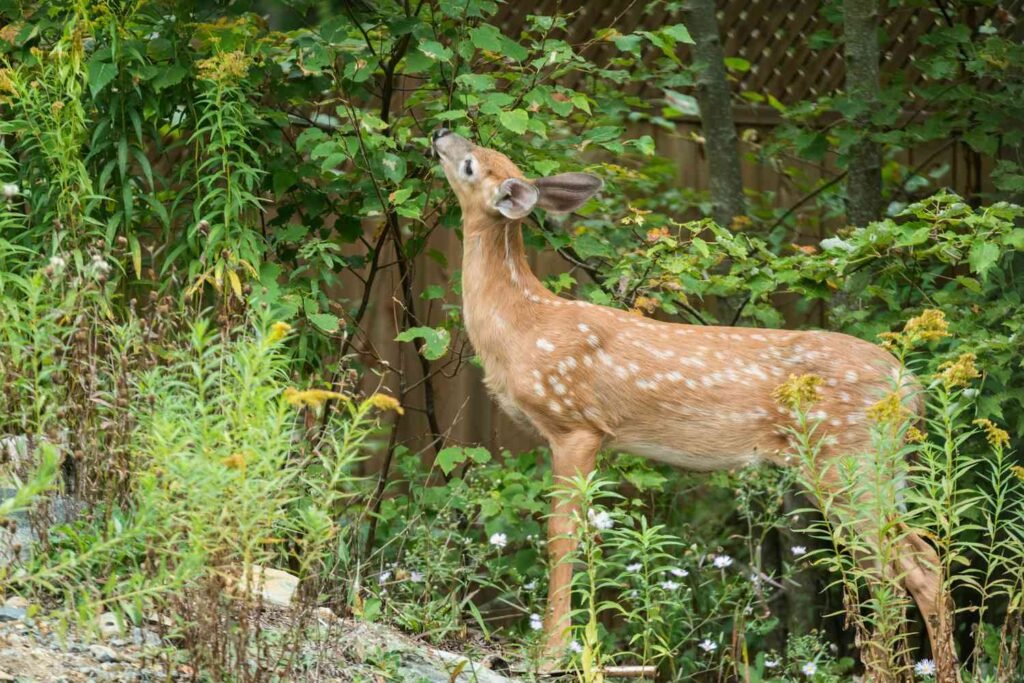
Understanding deer behavior is key to preventing damage:
- Food scarcity: As natural food sources like acorns and wild berries become limited, deer turn to gardens for easy nutrition.
- High-nutrient crops: Late-season vegetables such as kale, cabbage, and pumpkins are especially appealing.
- Ornamental plants: Perennials, shrubs, and fall flowers with tender shoots are targeted.
- Shelter: Gardens with dense shrubs or hedges provide cover, encouraging deer to linger.
By identifying what attracts deer, gardeners can take proactive steps to minimize losses.
Step 1: Physical Barriers
Physical barriers are the most reliable way to protect gardens from deer.
Fencing
- Height matters: Deer can jump over 8 feet, so fences should be at least 8 feet tall or angled outward to prevent leaping.
- Material options: Wire mesh, electric fencing, or wooden barriers can all be effective.
- Placement: Surround entire garden areas and secure edges to prevent deer from slipping underneath.
Netting and Plant Covers
- Use fine mesh or netting to protect smaller plants, shrubs, and individual vegetables.
- Row covers can shield tender seedlings from browsing while allowing sunlight and water through.
- Temporary cages or cloches work well for high-value plants.
Physical barriers are highly effective but require maintenance and careful planning for accessibility and aesthetics.
Step 2: Deer-Resistant Plants
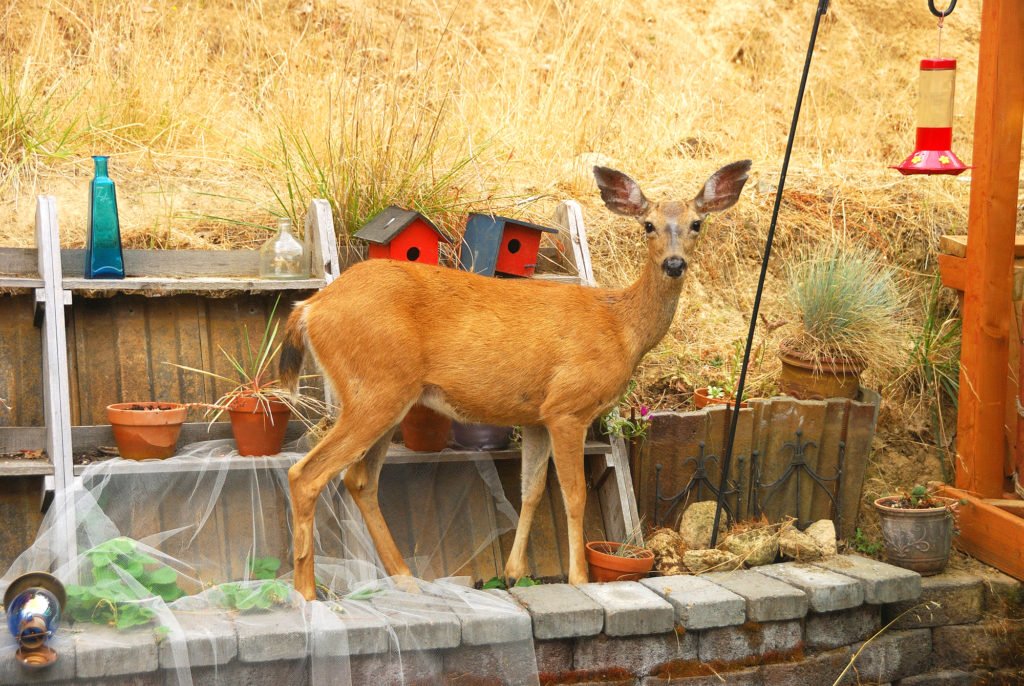
Another strategy is to incorporate plants deer are less likely to eat. While no plant is completely deer-proof, certain species are avoided due to taste, texture, or scent.
Fall-Friendly Deer-Resistant Plants
- Ornamentals:
- Daffodils and alliums (bulbs)
- Ornamental grasses (Miscanthus, Pampas)
- Ferns and lavender
- Vegetables and herbs:
- Onions, garlic, chives, and leeks
- Hot peppers
- Sage, rosemary, and thyme
Strategic Planting
- Plant deer-resistant species around the perimeter of your garden to act as a natural deterrent.
- Mix in vulnerable plants within resistant plants to reduce deer browsing.
While this method doesn’t guarantee total protection, it helps reduce overall deer impact.
Step 3: Repellents
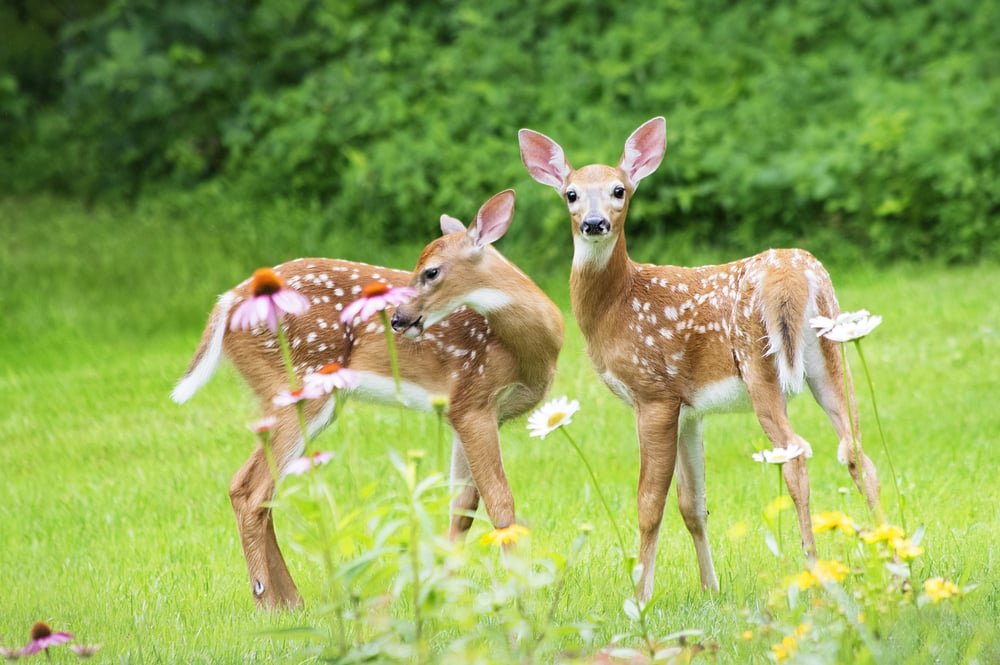
Deer repellents are a practical, flexible option that uses taste, scent, or chemical deterrents to discourage browsing.
Types of Repellents
- Commercial chemical repellents:
- Spray leaves and stems to create a taste deer dislike.
- Reapply after rain or heavy dew for continued effectiveness.
- Homemade deterrents:
- Mixtures of garlic, hot pepper, or eggs blended with water and sprayed on plants.
- Soap bars hung near plants can emit scents deer find unpleasant.
- Motion-activated devices:
- Sprinklers or lights triggered by movement startle deer and keep them away.
Application Tips
- Rotate repellents regularly to prevent deer from becoming accustomed to one type.
- Apply repellents during peak deer activity in the evening or early morning.
- Always follow label instructions for commercial products to ensure plant safety.
Repellents are most effective when combined with other strategies, such as barriers or resistant plants.
Step 4: Landscaping Techniques
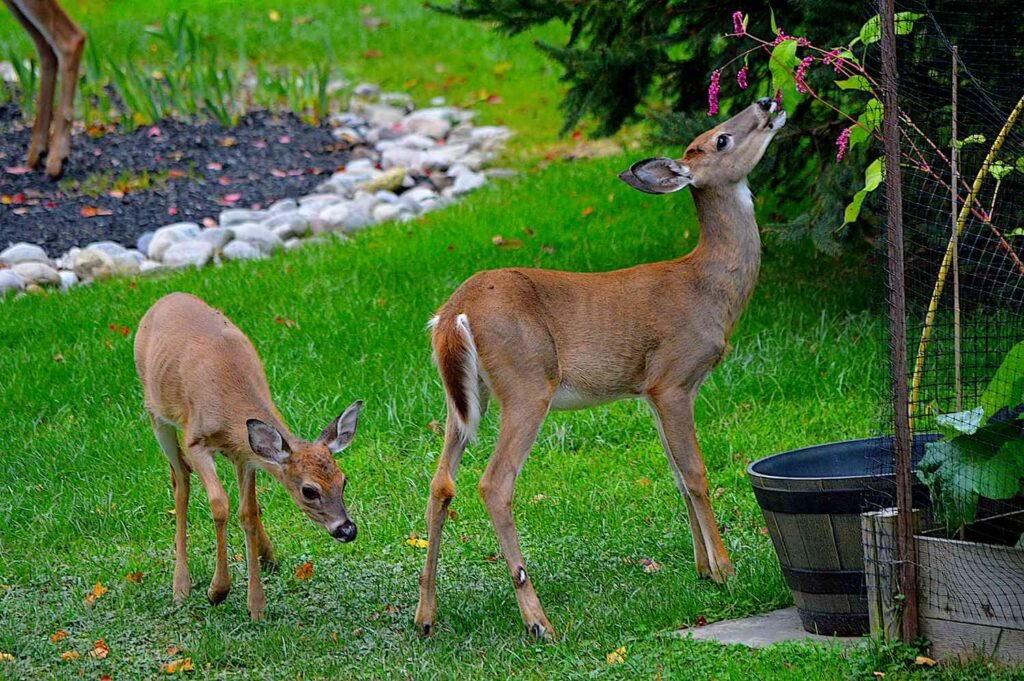
Garden design can influence deer behavior and reduce damage.
Strategic Layout
- Create buffer zones: Plant deer-resistant species along garden edges to discourage entry.
- Group tender plants together: Makes it easier to protect them with netting or barriers.
- Remove cover: Trim overgrown shrubs and tall grasses near the garden to reduce hiding spots for deer.
Companion Planting
- Mix fragrant herbs (rosemary, lavender, thyme) among vulnerable vegetables.
- Interplant ornamental grasses with fall flowers to create texture that deer avoid.
By thoughtfully designing your garden, you can naturally make it less inviting to deer.
Step 5: Timing and Seasonal Awareness
Deer activity increases in fall due to rutting season and the search for food. Understanding seasonal patterns helps optimize preventive measures:
- Rut season (October–November): Deer are more active and aggressive. Increase vigilance and barriers during this period.
- Pre-winter feeding: Deer intensify browsing as natural food sources dwindle. Apply repellents more frequently and ensure barriers are intact.
- Early planting: Some vegetables and flowers can be planted earlier or later to avoid peak deer activity.
Monitoring deer behavior throughout the season allows for timely interventions and reduces garden damage.
Step 6: Integrated Deer Management
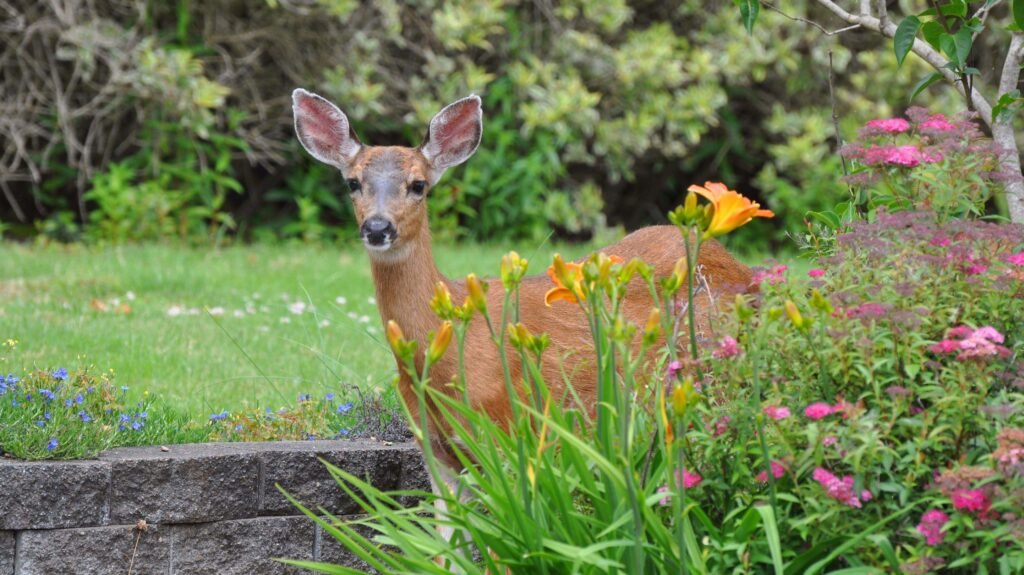
The most effective approach combines multiple strategies for consistent protection.
Integrated Strategies
- Fencing + repellents: Physical barriers supplemented with chemical or homemade deterrents provide dual protection.
- Resistant plants + landscape design: Reduce attractiveness while maintaining garden aesthetics.
- Regular monitoring: Walk the garden regularly to inspect for damage, replenish repellents, and adjust barriers.
- Community awareness: Coordinate with neighbors to reduce deer feeding opportunities in the surrounding area.
Integrated management is proactive, reducing reliance on a single method and minimizing garden losses.
Common Mistakes to Avoid
- Assuming deer won’t jump fences: Short fences are often ineffective.
- Neglecting perimeter maintenance: Gaps and weak points invite deer into the garden.
- Relying solely on one deterrent: Deer can adapt to a single repellent or strategy over time.
- Planting highly attractive crops without protection: Leaves, berries, and tender vegetables are prime targets if left exposed.
- Ignoring seasonal behavior: Peak activity times require extra vigilance and reinforcement.
Avoiding these mistakes ensures your fall garden remains largely deer-free and healthy.
Benefits of Effective Deer Management
Proper deer management offers multiple advantages:
- Preserves garden yield: Protects vegetables, flowers, and ornamental plants from heavy damage.
- Reduces stress: Minimizes the need for constant repair and replacement of damaged plants.
- Supports biodiversity: Maintains balanced plantings without overgrazing by deer.
- Enhances aesthetic appeal: Fall colors, late-season flowers, and vegetables remain intact, improving landscape beauty.
- Saves money: Reduces costs associated with replacing plants or repairing fences.
By combining physical, chemical, and strategic measures, homeowners can enjoy the beauty and productivity of their fall gardens without frequent deer intrusion.
Conclusion
Deer are an unavoidable part of many landscapes, especially in suburban and rural areas. However, with proper planning and consistent action, deer damage can be minimized or prevented.
Key strategies include:
- Installing physical barriers such as tall fences or protective netting.
- Planting deer-resistant species and creating buffer zones.
- Using commercial or homemade repellents.
- Designing landscapes strategically to reduce cover and accessibility.
- Timing interventions according to deer activity and seasonal patterns.
- Integrating multiple approaches for consistent, long-term protection.
Fall gardens can remain vibrant, productive, and largely deer-free when these practices are implemented. By proactively managing deer, gardeners protect their investment, maintain the beauty of their outdoor space, and ensure a successful growing season year after year.
